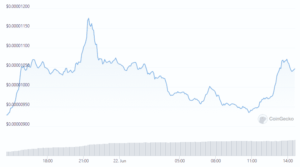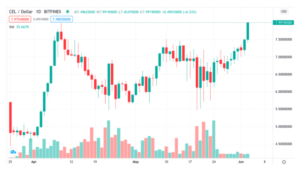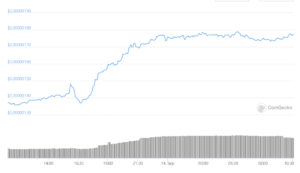As you may be aware, cryptocurrency trading can be volatile, and price spikes have come to be expected. Unfortunately, many cryptocurrency exchanges are unable to handle a high volume, and as a result, platforms experience failures and outages. This can result in a loss of access to the platform, and in some cases, it means funds are lost. Users may also be locked out from buying or selling, which can cause huge inconvenience.
Take a look at some of the biggest historical platform failures, you may be surprised to see some popular cryptocurrency exchanges make it on our list.
May 19th, 2021
One of the biggest platform failures occurred earlier this year when the market had one of its significant crashes. Bitcoin plunged by as much as 31%, and it was the biggest daily dump since 2013. As a result of added volume, major exchanges, including Coinbase and Binance, were affected by significant outages and failures.
Binance was the first to report problems, it disabled Ethereum withdrawals due to network congestion. Coinbase soon followed, reporting downtime on its platform. It should be noted that this failure came after the company had recently been publicly listed in a hugely anticipated IPO. Also, Indian cryptocurrency exchanges WazirX and CoinDCX suffered significant downtime.
ADVERTISEMENT
It later emerged that some users had been permanently locked out of their Binance accounts and could not access their funds. A group of 700 traders teamed up to take legal action against Binance.
September 7th, 2021
Just a few months later, cryptocurrency exchanges would again fail to cope with large trading volumes. On 7th September 2021, almost $240 billion was wiped from cryptocurrency markets. The crash came a day after El Salvador had accepted Bitcoin as legal tender, and the crypto had rallied. Coinbase and Kraken users were impacted by delays on the platform, which meant that some orders were not going through. Users also experienced various errors on the app. Coinbase reported that issues were fixed by the afternoon. Meanwhile, another major exchange Gemini entered a full maintenance period to resolve performance issues.
January 11th, 2021
The direction of price usually doesn’t make a difference for outages. Both rallies and crashes are known to have caused issues for platforms. Another significant outage occurred at the start of 2021 when Bitcoin rose above $40,000. Coinbase and Kraken were affected by connectivity issues. The Coinbase support team tweeted they had been resolved after around 4 hours. Kraken reported that their issues were due to ‘heavy loads, and the exchange was back up in around 3 hours.
May 26th, 2017
One of the biggest outages occurred in May 2017 when Coinbase users were affected by performance issues and withdrawal/deposit delays. The company made the following statement; “The Coinbase engineering and support teams have been working round the clock to keep up with this unprecedented volume. However, Coinbase.com has suffered a few outages, including degraded performance and deposit/withdrawal delays for some users. We are actively working on resolving these issues and restoring our site to normal performance.” It is notable that similar issues continue to occur on the same platform almost 4 years after this incident. The cryptocurrency industry has matured in so many ways since 2017, but sadly outages and platform failures are still a common occurrence.
March 13th, 2020
Trading volume isn’t the only factor that can cause downtime. In March 2020, BitMex experienced a DDOS attack that affected user access to the platform. The company wrote, “BitMEX came under an aggressive DDoS attack, which delayed and prevented requests to the platform. Our security team regained control to prevent further delays and resumed full service within 25 minutes. We have confirmed that the issue earlier today was caused by the same attack.” Bitmex was also affected by a major outage later that year, on May 19th, 2020.
ADVERTISEMENT
What can platforms do to avoid such failures?
It is clear that platforms should be prepared for significantly volatile days, and their platforms must be able to handle sudden spikes in volume. This is easier said than done, and it requires significant investments in technology. Many crypto exchanges are simply not built to handle surges in demand, and therefore you cannot rely on them to be available all the time. The last thing that any trader should have to worry about is being unable to access their funds due to an outage. Below are some examples.
- Currency.com
One platform that has not suffered any significant outages or failures is Currency.com. It was one of the lesser well-known exchanges, and it has developed into an established operator. It achieved this by having a solid foundation to build on. Indeed, one of the problems with bigger exchanges is that they grew too quickly and were therefore unable to handle high volumes of transactions. Some of them promise the moon but fail to deliver when the pressure is on. By focusing on building security and technology, exchanges like Currency.com are able to expand more slowly and can better deal with spikes in trading volume.
They have the infrastructure to manage high capacity, which means they can deal with sudden increases in traffic and trading volume. Some exchanges promise the moon, but Currency.com has established systems that can handle a high volume of trades.
Another platform that has avoided significant platform failures is FTX.com. It was founded in 2019 and has since become one of the most well-known cryptocurrency derivatives exchanges. The platform employs circuit breakers and other trading limits during times of high volatility. Aside from the crash in March 2020 that affected many exchanges, FTX has managed to cope relatively well due to the technology available on their exchange and the specific measures they take to avoid downtime.
Perhaps platforms shouldn’t share all of the blame when they deal with factors outside of their control. It is hard to predict high-volume events. However, platforms should do their best to ensure that outages are prevented. The cryptocurrency industry remains in its infancy, but high-profile outages give ammo to detractors.
Traditional brokers also face outages
However, it should be noted that it isn’t only cryptocurrency exchanges that have to contend with outages. Major trading brokers such as Robinhood and TD Ameritrade have also dealt with downtime as a result of retail trading frenzies. A notable example came during the stock split of Apple and Tesla.
Trading is more accessible than ever, and enthusiasm is increasing, especially among a younger audience. This means that cryptocurrency exchanges and other trading platforms will need to be ready for the next generation of traders and have systems that can deal with high-volume trading events.
Final thoughts
With cryptocurrencies being volatile, it is important to have an exchange that you can rely on. Sadly, even the biggest cryptocurrency exchanges have been unable to handle surges in trading volume. These surges can typically lead to downtime, and users can be unable to access their funds. Therefore it is vital to do your research and select an exchange that has the technology needed to adapt to changing trading conditions.
DC Forecasts is a leader in many crypto news categories, striving for the highest journalistic standards and abiding by a strict set of editorial policies. If you are interested to offer your expertise or contribute to our news website, feel free to contact us at [email protected]
- Bitcoin
- blockchain
- blockchain compliance
- blockchain conference
- coinbase
- coingenius
- Consensus
- crypto conference
- crypto mining
- cryptocurrency
- DC Forecasts
- decentralized
- DeFi
- Digital Assets
- ethereum
- machine learning
- non fungible token
- plato
- plato ai
- Plato Data Intelligence
- Platoblockchain
- PlatoData
- platogaming
- Polygon
- Press Releases
- proof of stake
- W3
- zephyrnet













